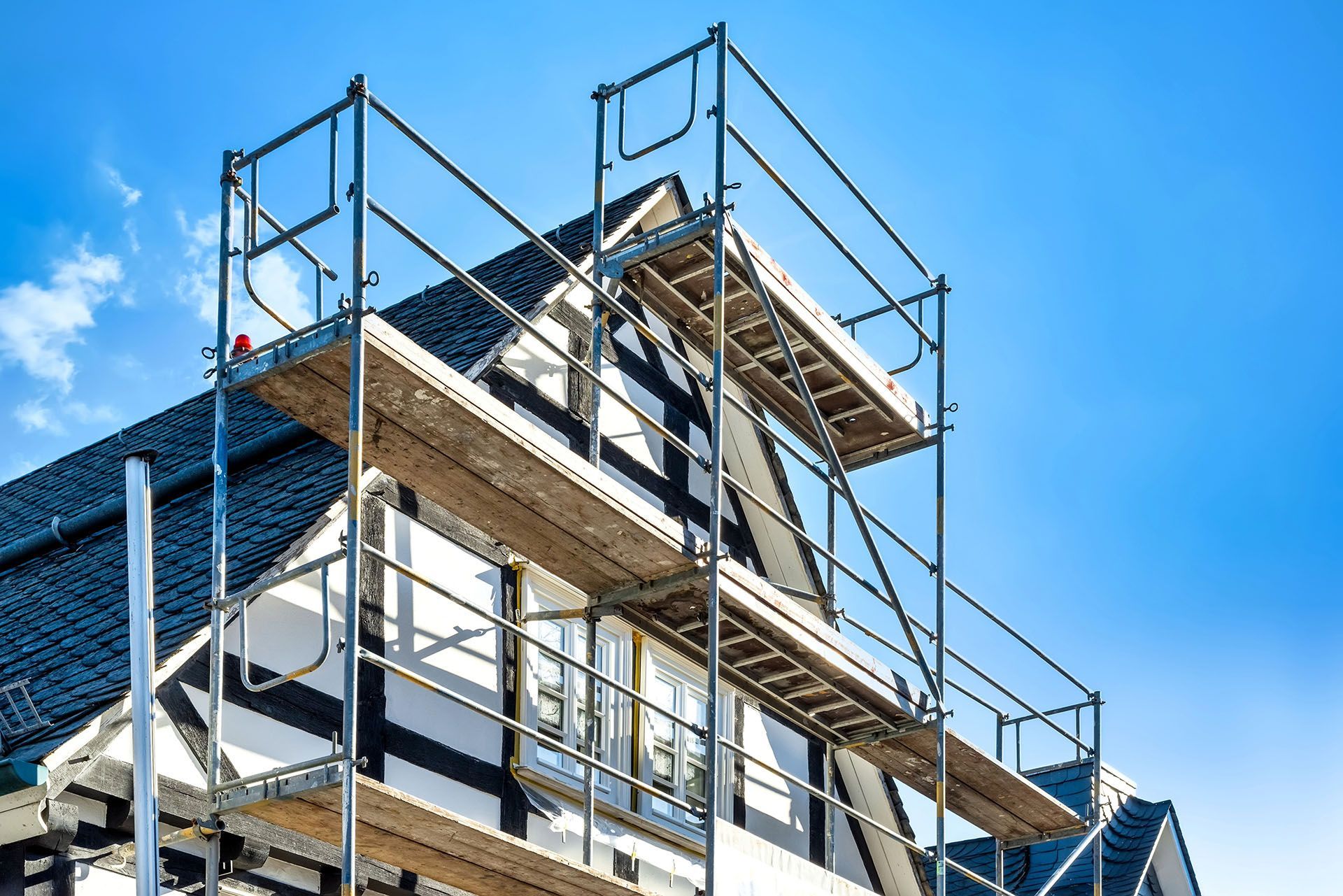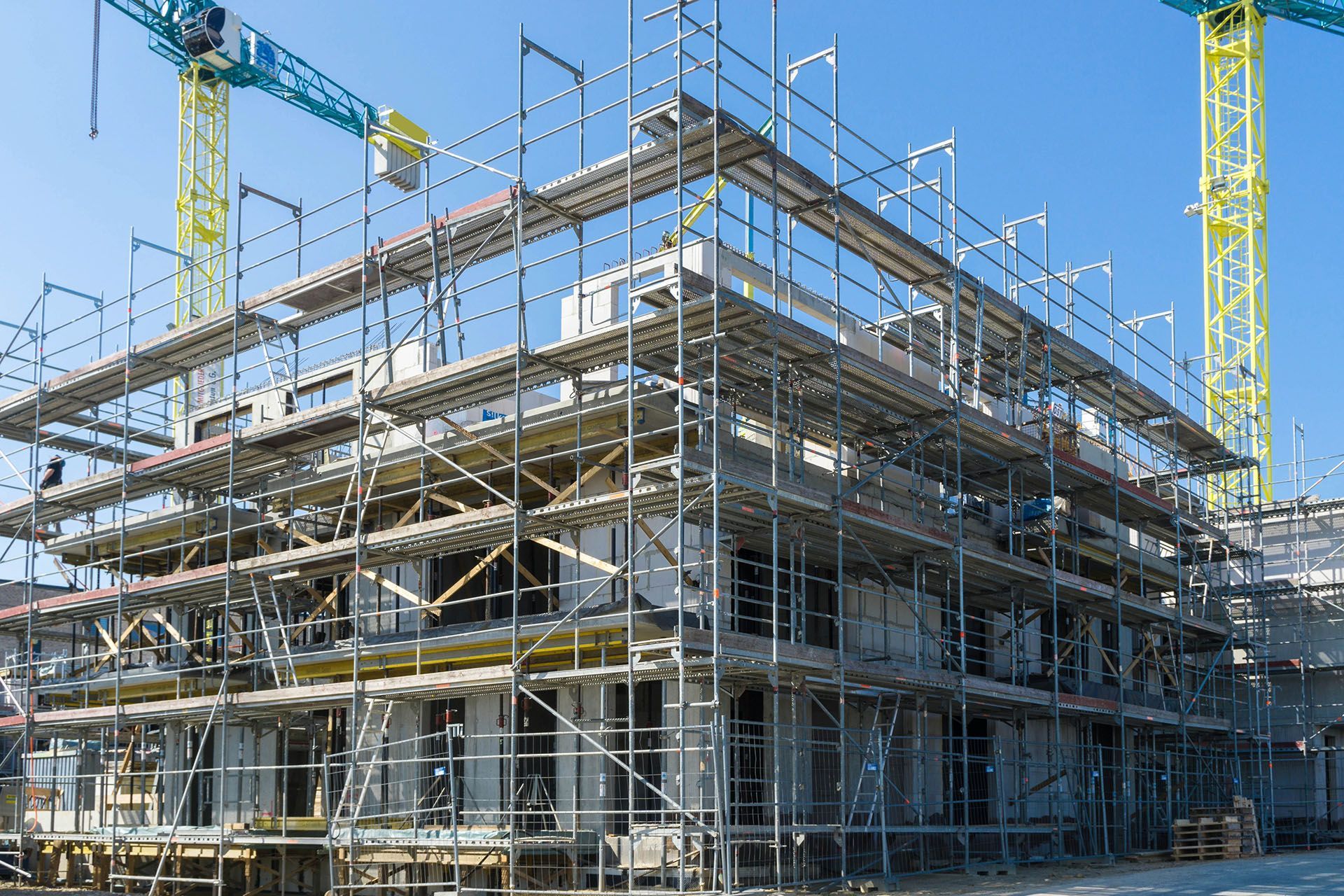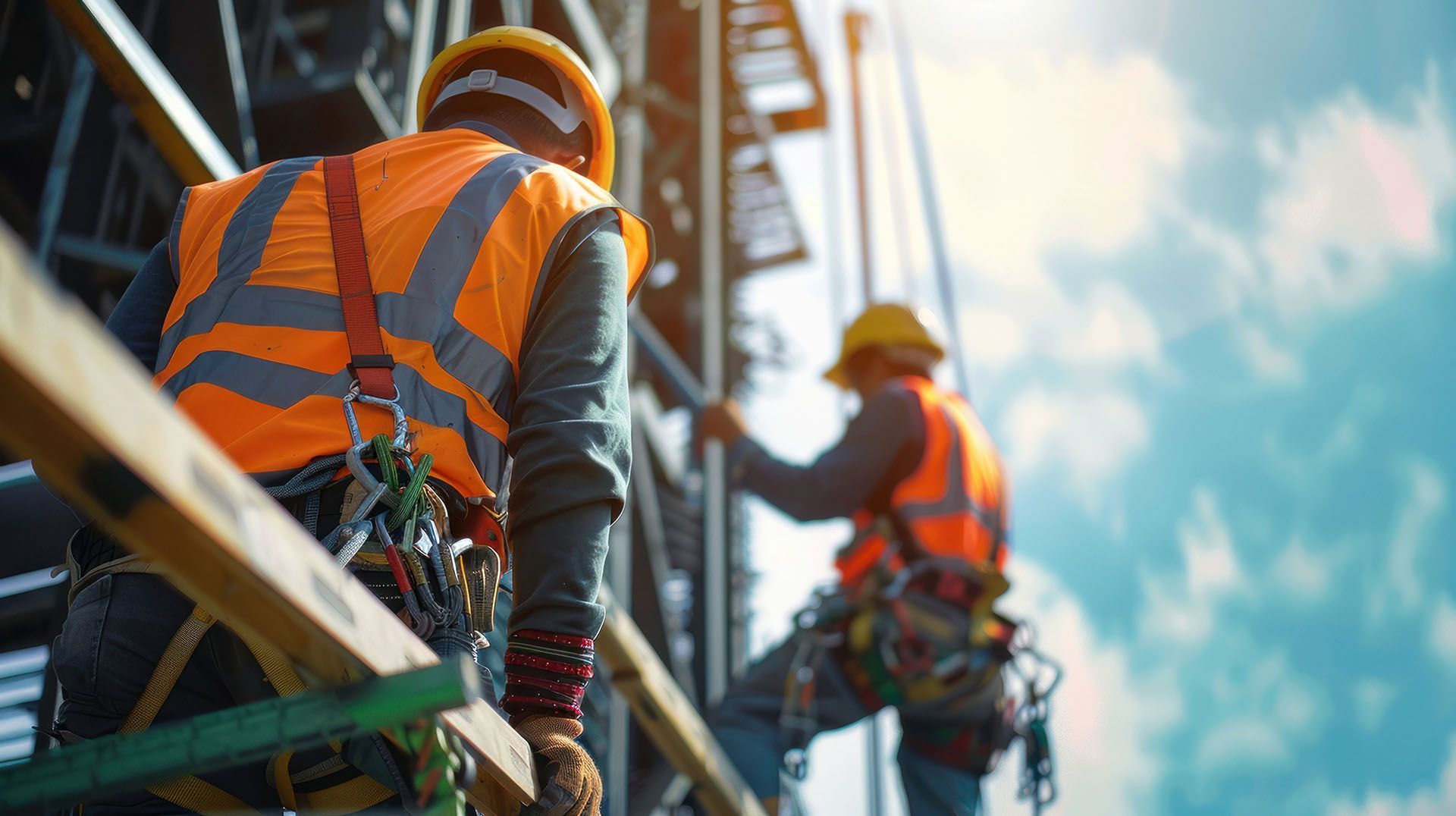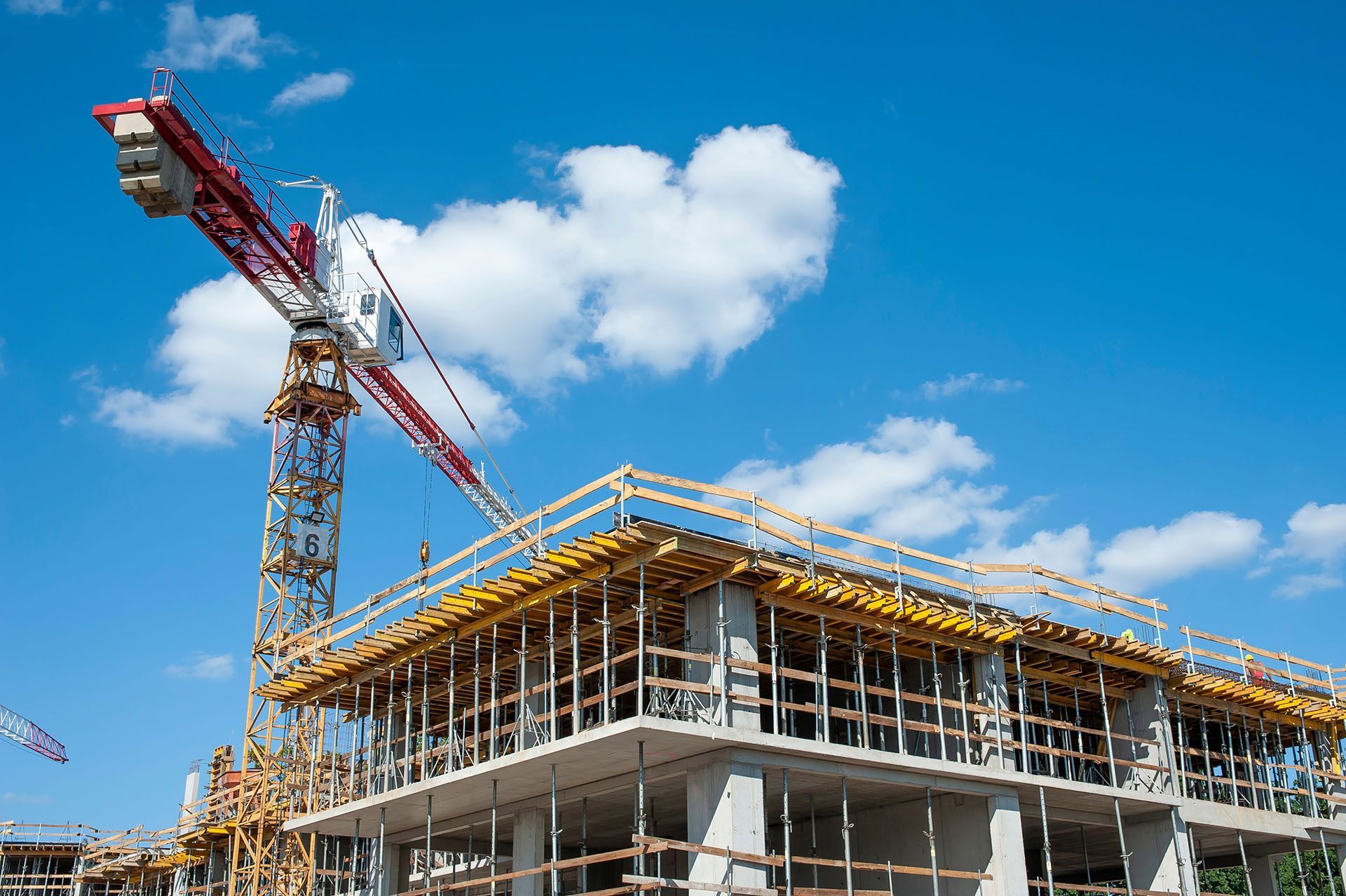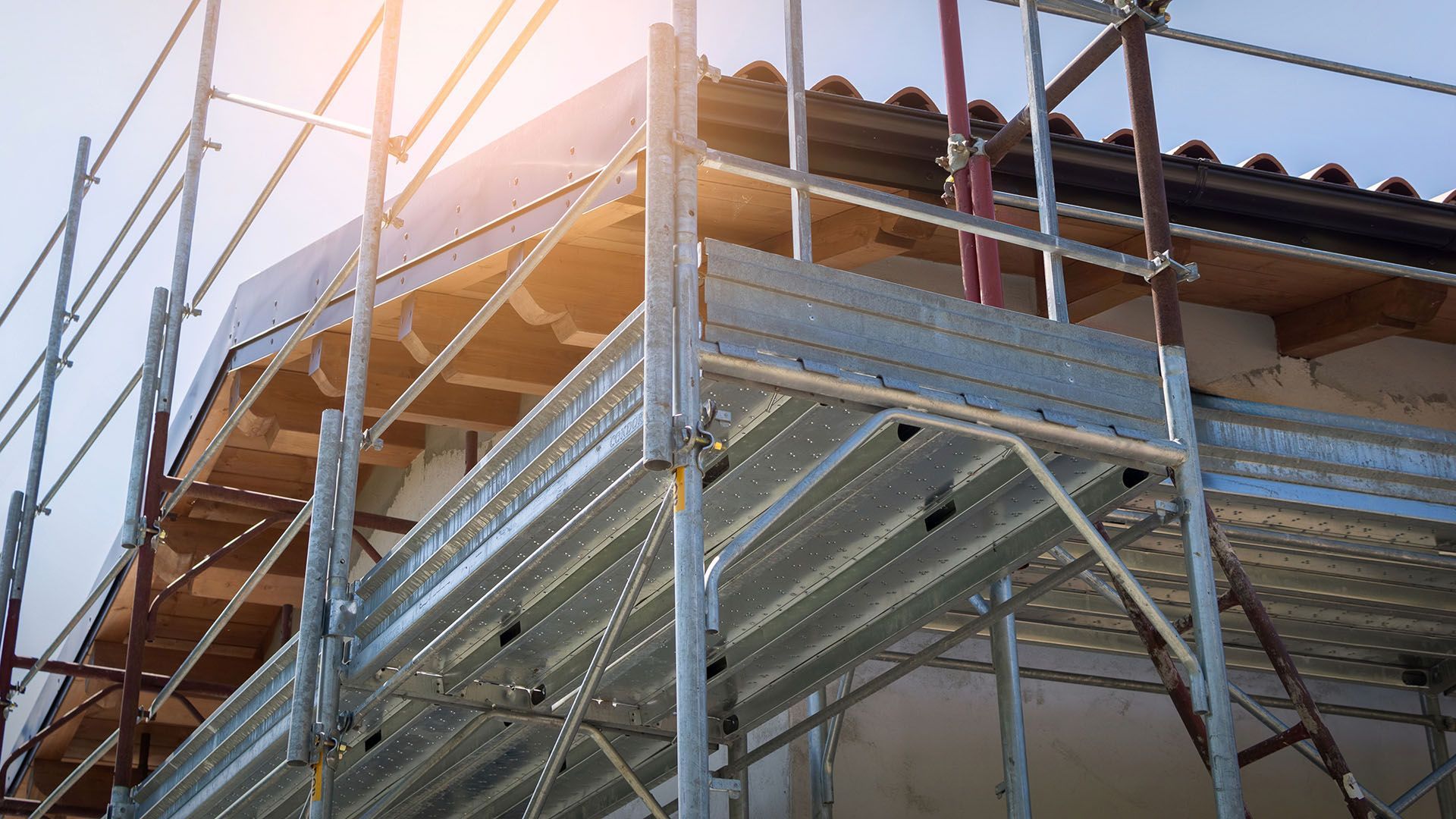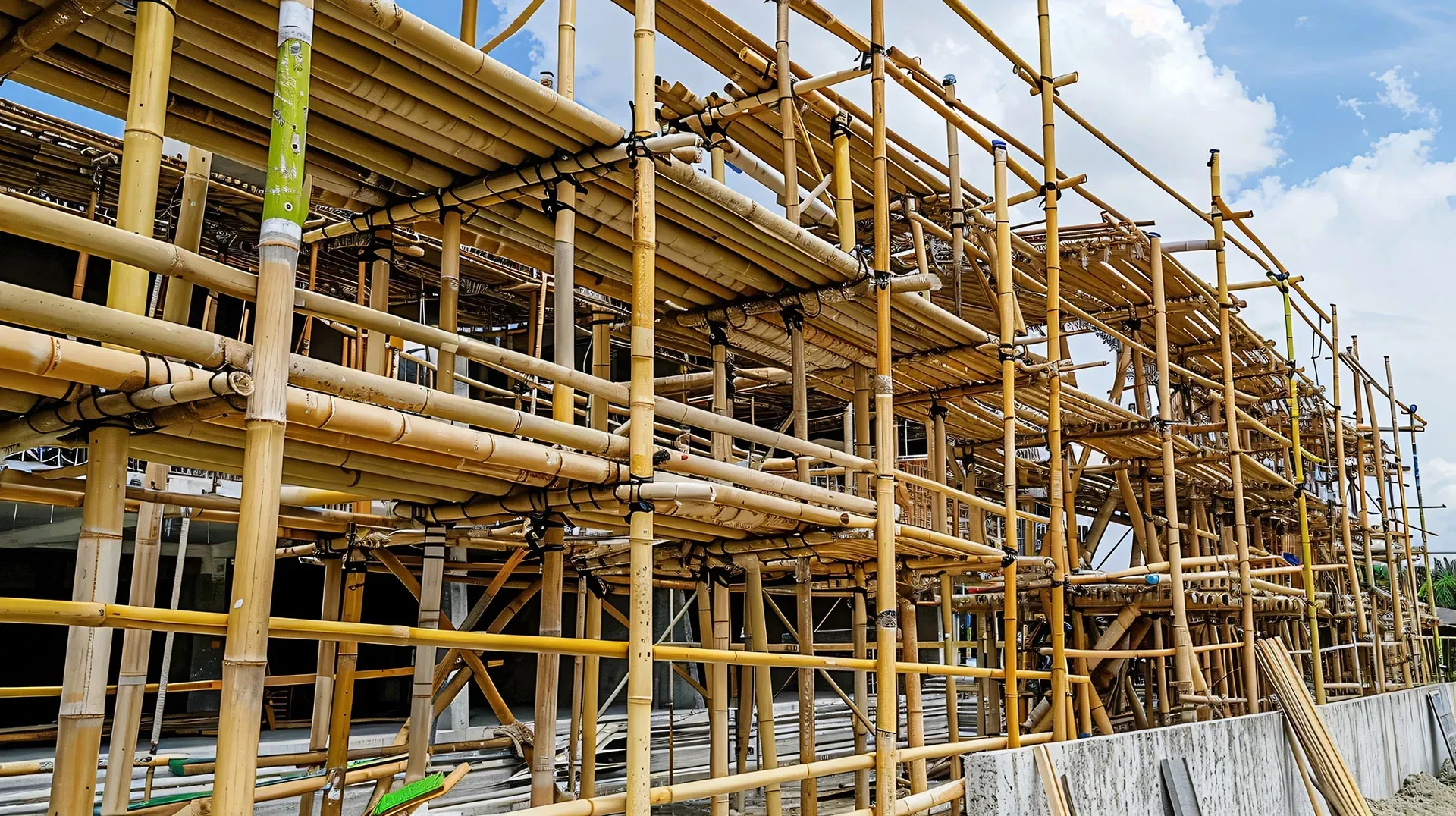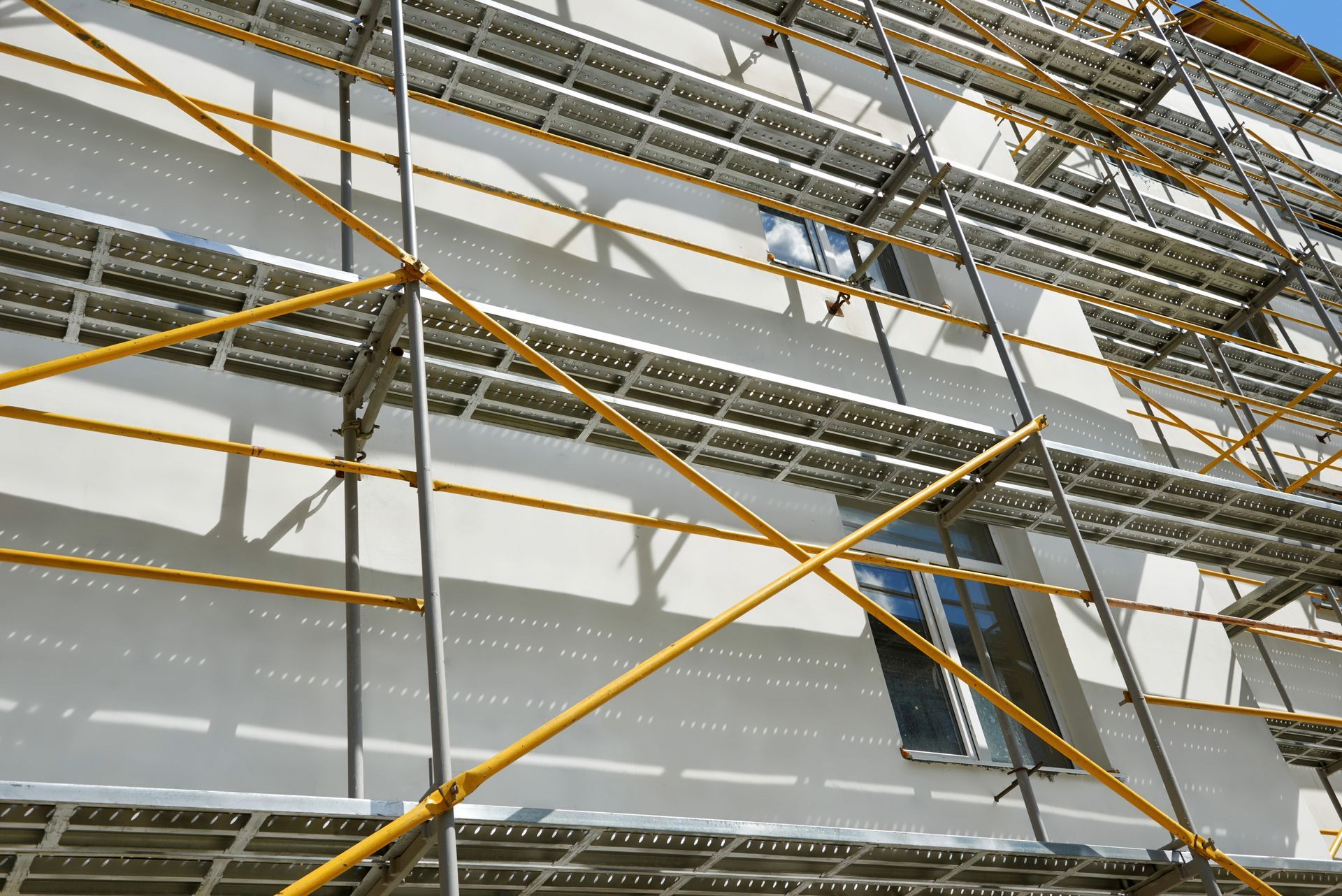What is Scaffolding
What is scaffolding? Take a look at any Aussie construction site and you’ll spot a web of steel tubes, timber planks, and sturdy platforms wrapped around rising buildings. That’s scaffolding, the unsung hero that keeps tradies safe, projects on schedule, and progress literally off the ground.
Whether it’s laying bricks, installing façades, or adding the finishing coat of paint, scaffolding provides the stable access and critical support that every stage of construction development depends on.
In this guide, you’ll learn what scaffolding is, why it is essential, and how it helps keep worksites safe and efficient, from the ground up.
How Does Scaffolding Work?
At its heart, a scaffold is a temporary framework constructed from vertical standards, horizontal ledgers and cross‐brace transoms. These elements slot together (or are coupler-clamped) to form a rigid structure capable of bearing workers, tools and materials. Decks or platforms made from steel or seasoned wood planks create working levels, while ropes or mechanical hoists move gear up and down the frame. Guardrails, toe-boards, and kick screens round out the system to keep people and loose objects where they belong.
Key Components You Should Know About Scaffolding
- Tubes – in Australia, these are usually hot-dip galvanised steel (48 mm outside diameter).
- Couplers – clamps that lock tubes together at right angles or swivels.
- Planks/decking – laminated timber boards that create solid work surfaces.
- Base plates & sole boards – spread the load so the scaffold doesn’t punch through soft ground.
- Ties & anchors – connect the frame back to the building for lateral stability.
- Ladders, stairs & gates – provide controlled entry and exit to the scaffolding.
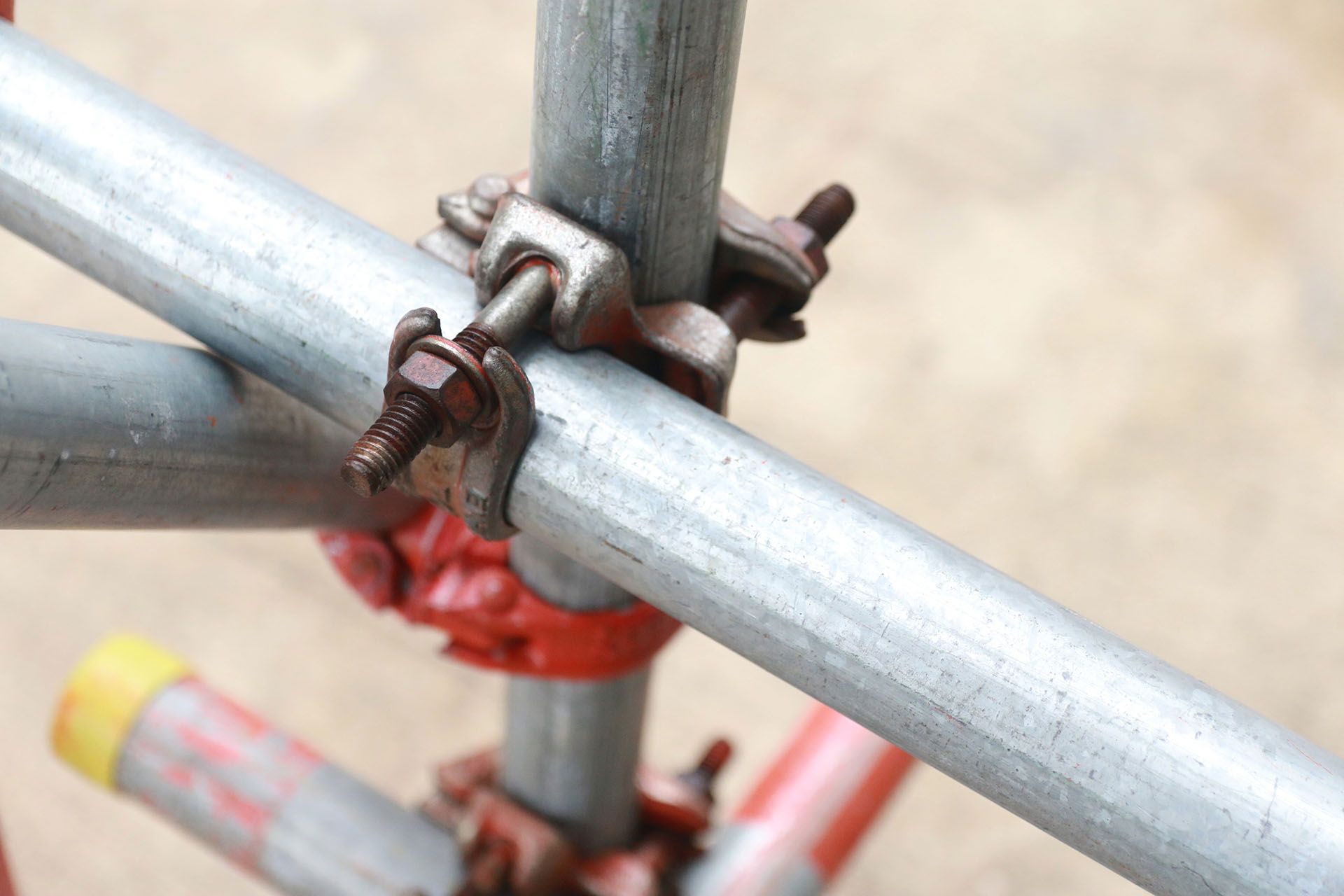
Common Types of Scaffolding You’ll Meet on an Aussie Worksite
Scaffolding isn’t one-size-fits-all. Different job sites require different scaffold setups and categories, each designed to meet specific needs or models.
A significant number of independent scaffolds (also known as double scaffolding) is commonly used around brick or block walls. It features two rows of vertical standards that share the load evenly, offering excellent stability and strength, making it perfect for heavier trades such as masonry.
Single Scaffolding
Also known as putlog scaffolding. It is more suited to lighter façade work. This type of scaffolding features a single row of metal standards, accompanied by horizontal supports (putlogs) that are designed to rest directly on the wall itself, providing the necessary equipment for workers. It’s a more straightforward and quicker option when the structure being worked on can help support the scaffold.
Mobile Scaffolding
Mobile scaffolding is ideal for fit-outs, painting, and general maintenance. These towers are built on castors and can be easily rolled along flat surfaces, making them highly flexible for short-term or frequently shifting tasks.
Low-level Scaffolding
Low-level scaffolding serves a similar purpose but is designed for use at heights under two metres. This type of scaffolding is typically made up of folding mini-towers or trestles. It’s lightweight, quick to assemble, and ideal for interior tasks such as plaster repairs or skirting installation.
Suspended Scaffolding
Suspended scaffolding is often seen hanging off the sides of high-rise buildings. Workers operate from a cradle that can be raised or lowered by winches, making it a go-to choice for window installation, painting, and external maintenance at height.
Cantilever Scaffolding
It is used when the ground space below is restricted – for example, in tight laneways or overhangs. This system projects out from the main building, allowing access where traditional vertical support from the ground isn’t practical.
Choosing the right scaffold products isn’t just about convenience – it directly impacts load capacity and compliance with regulations on how efficiently other trades can get their job done.
Choosing the Right Scaffolding Material
Choosing the right scaffolding material isn’t just a technical detail – it directly affects security, usability, and cost-efficiency on site. Several factors, including strength, durability, and ease of assembly, determine which material is best suited for a particular project.
Steel
In most Australian projects that have been constructed, high-tensile steel is often introduced as the go-to or primary choice for scaffold frames. It is incredibly strong, durable under pressure, has a robust structure, and offers excellent fire resistance. These are especially important on larger or long-term builds. This type of scaffolding can carry heavy loads with ease, making it suitable for multi-trade access where workers, tools, and materials all share the same platform.
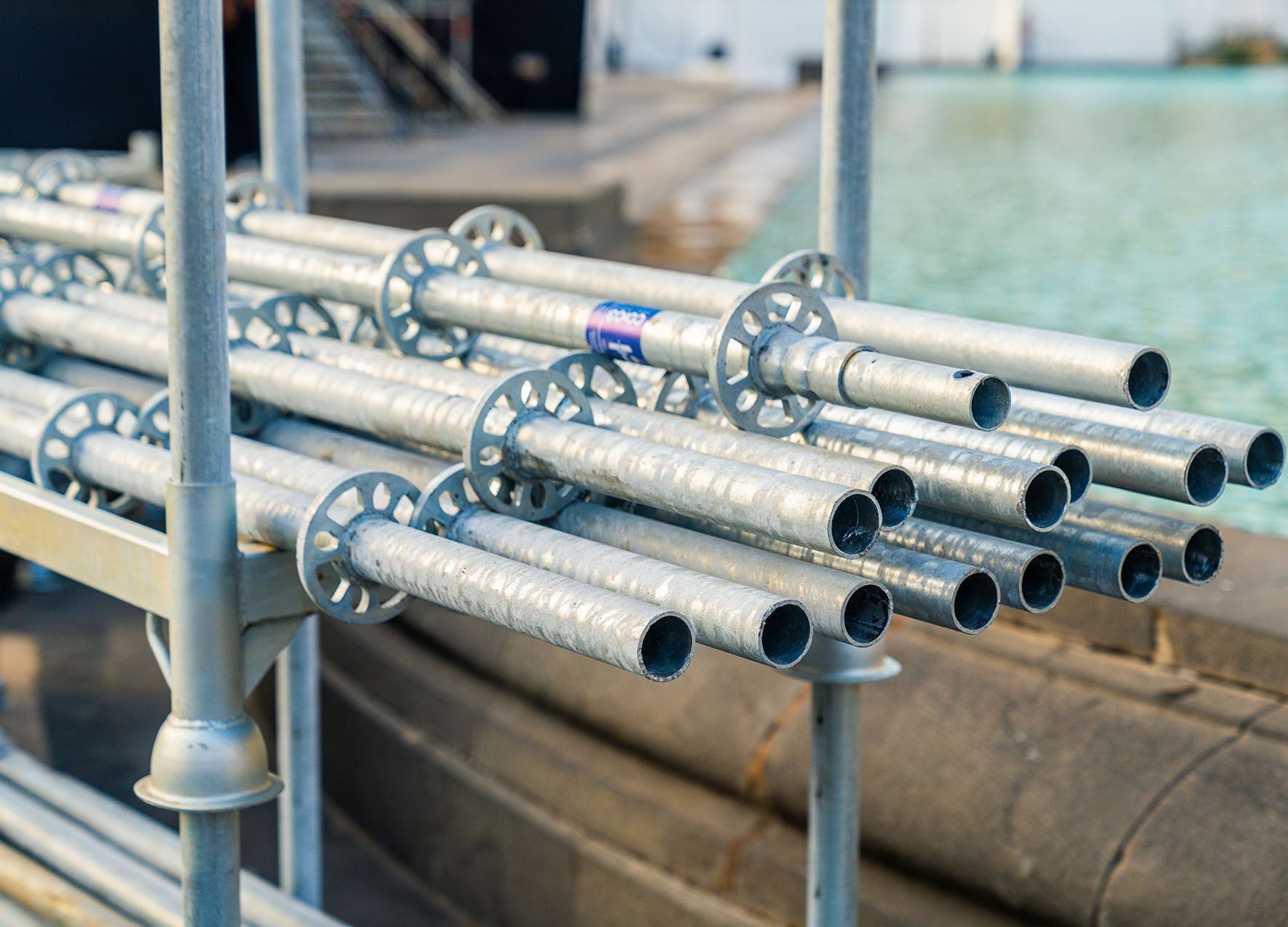
Aluminum
Aluminium, although not as commonly used in heavy construction, is widely employed in mobile scaffolding and short-term setups, such as property maintenance or event rigging. It’s significantly more lightweight than the previous option, which makes it easier to transport and assemble. That is especially true in tight spaces or areas with limited ground access.
The trade-off? Aluminium dents more easily under impact and has a lower load-bearing level, which limits its use in high-load scenarios.
Timber
Timber, particularly seasoned hardwood, remains popular for decking planks. It has a natural “give” underfoot that many workers prefer, offering a more forgiving and stable level when compared to mesh or solid panels.
However, timber is susceptible to splitting, rot, and wear over time, especially if exposed to the elements. That’s why regular maintenance and visual checks are critical. Any planks showing signs of damage must be removed from service immediately to maintain required standards.
Every scaffolding material serves a purpose. The right choice depends on the job type, site conditions, and whether the priority is strength, mobility, or worker comfort. On many modern builds, you’ll even see a hybrid approach – steel for the frame, timber for the decks or platforms, and the occasional use of aluminium towers, as these are used for specific mobile tasks.
The Importance of Scaffolding in Construction
Scaffolding plays a crucial role in construction development, not just for accessibility but also for efficiency. Without proper scaffolding, work at height would become riskier and significantly slower. It allows multiple trades, such as bricklayers, painters, and electricians, to access work areas securely, reducing the risk of falls and ensuring projects progress on schedule.
Scaffolding Installation: A Helpful Guide
Proper scaffold installation follows a structured process:
- Site Assessment – Determine the load requirements and space limitations.
- Frame Assembly – Connect the metal standards, ledgers, transoms, and bracing components of the scaffold securely.
- Deck Placement – Install decking to form stable working surfaces.
- Guardrails & Security Measures – Add toe-boards, kick screens, access ladders, and ropes to secure tools and equipment, ensuring compliance and safety.
- Inspection & Certification – Conduct thorough reviews of standards, ledgers, transoms, and other components before use to confirm the scaffold’s structural integrity and stability.

The Regulatory Landscape
Work at height is tightly regulated. The AS/NZS 1576 series sets out design and performance requirements for all scaffold systems, while AS/NZS 4576 offers practical guidance for erection, inspection and dismantling. Designers, scaffolders and principal contractors must also comply with each state’s Work Health and Safety (WHS) Regulations and reference Safe Work Australia’s Guide to Scaffolds and Scaffolding.
Under WHS law, any scaffold with a working deck above 4 m requires a qualified (HRW‐SB) licence to erect, alter or dismantle. Detailed handover certificates, documented maintenance logs, and the process of routine inspections are mandatory for all types of metal scaffolding. All components must be tagged “fit for use” before workers can step onto the deck – a small procedure that prevents countless incidents of injury or, in extreme cases, death.
Five Safety Principles Every Site Should Adopt
- Plan the load path – calculate the dead load (the scaffold itself), live load (people, tools, equipment) and environmental load (wind) that create stress on the structure. Ensure the structure is level before loading and that distances between load-bearing points are correctly maintained. Overloading can cause progressive collapse.
- Use the right ties – masonry anchors, through-bolts, or reveal ties must be engineered for the substrate so that the framework stays in place.
- Never mix systems
– using tubes, transoms, or scaffold products from different manufacturers or models can result in incompatible tolerances, compromising structural integrity.
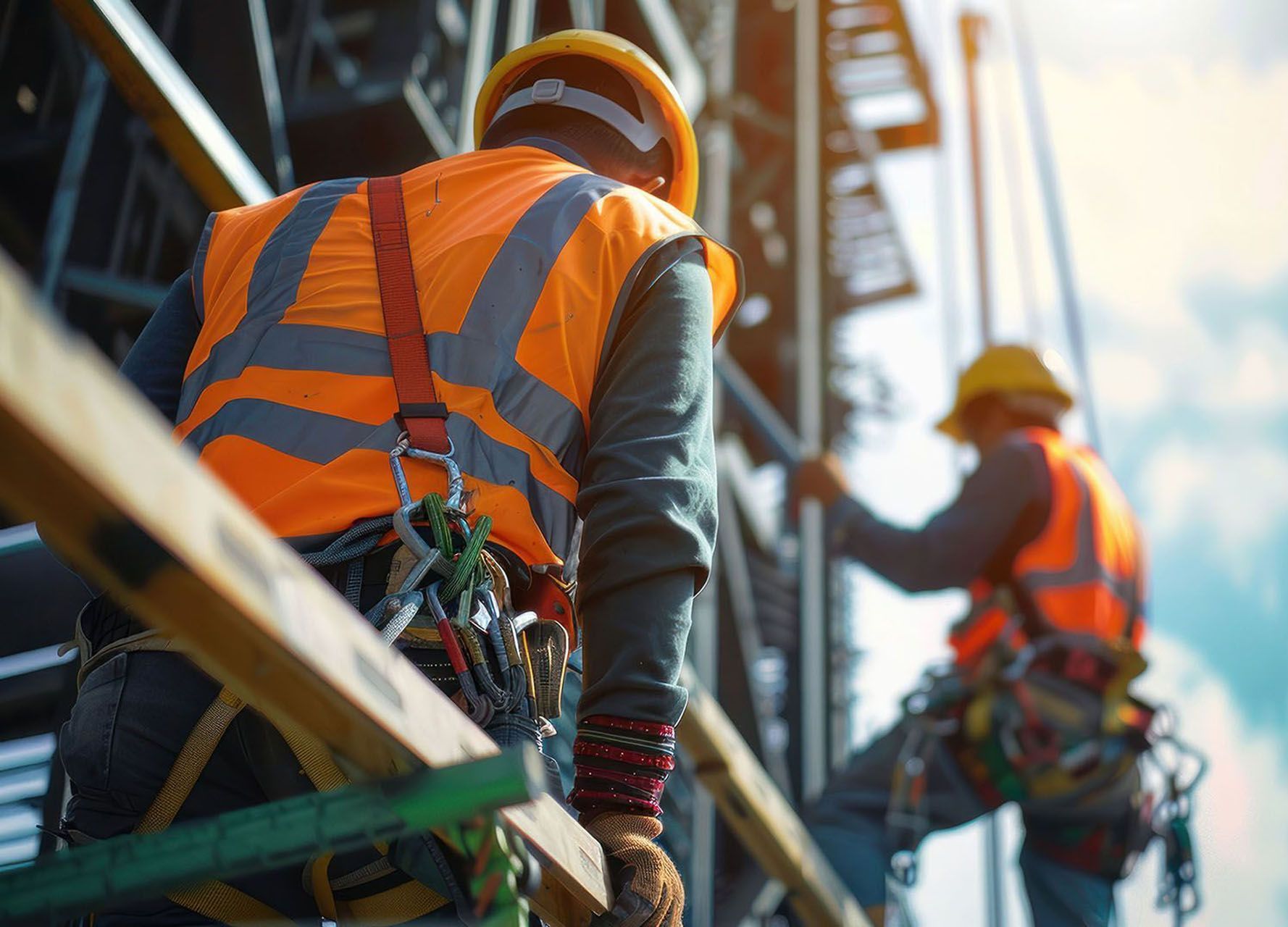
- Keep the deck clear – loose off-cuts and buckets are trip hazards. Establish a “nothing stored on the platform” rule unless necessary for the task. Use ropes to secure tools and materials to prevent them from falling and causing injury below.
- Ongoing training & supervision – new crew members should shadow experienced hands until they demonstrate proper competency.
What Happens When Things Go Wrong?
Falls from height remain a leading cause of fatalities nationwide. In the context of construction, statistics show that improper support, missing guardrails and unauthorised changes in scaffold structure are the usual suspects.
Robust procedures, daily pre-start walkarounds, and a culture where workers can halt the job if something feels unsafe present an opportunity for improving worksite security when all workers are engaged. One poorly secured ledger in the scaffold isn’t just a defect — it’s an accident waiting to happen.
Need Reliable Scaffolding for Your Next Project in Wollongong?
At Crewscaff, we recognise that safe and efficient access is the foundation of any successful construction project. Whether you’re tackling a residential renovation, a commercial fit-out, or a large-scale development, our team provides expert scaffolding solutions tailored to your specific needs.
We’re dedicated to full compliance, minimising disruption to your schedule, and ensuring the safety of everyone on-site during installation. With years of industry experience and an unwavering commitment to quality, we’re proud to support builders, tradies, and project managers across Wollongong and beyond.
Reach out to us today through our contact page on the website or call us at 0452 177 483 to discuss your scaffolding project or request a free quote. Let’s build something solid together.

